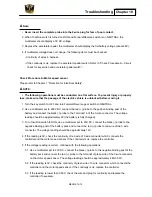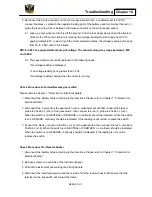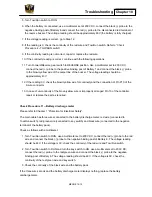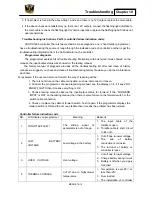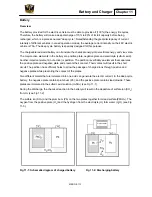
Battery and Charger
MERGE 11-1
Chapter 11
Battery
Overview
The battery provided for the electric vehicle must be able to provide all (100%) the energy it requires.
Therefore, the battery will make a deep discharge of 70% to 80% of its full capacity before being
recharged, which is a process named “deep cycle”. Notwithstanding the great discrepancy of current
intensity of different vehicles in varied operation modes, the average current intensity on the 48V electric
vehicle is 75A. The deep cycle battery is specially designed for this purpose.
The chargeable lead-acid battery can translate the chemical energy into electrical energy and vice versa.
The major active elements in the battery are positive plate, negative plate and electrolyte (sulfuric acid).
Another important element (not active) is partition. The partition is verifiably an element that separates
the positive plate and negative plate and prevents their contact. Their contact will result in the short
circuit. The partition has sufficient holes to allow the passage of charged ions through positive and
negative plates while preventing the contact of the plates.
Two different metals that are immersed into one acid can generate the electric current. In the deep cycle
battery, the negative plate contains plum bum (Pb), and the positive plate contains lead dioxide. These
plates are immersed in the sulfuric acid solution (H
2
SO
4
) (see Fig 11-1).
During the discharge, the chemical reaction in the battery will result in the departure of sulfate ion (SO
4
)
from H
2
(see Fig 11-2).
The sulfate ion (SO
4
) and the plum bum (Pb) on the two plates together form lead sulfate (PbSO
4
). The
oxygen from the positive plate (O
2
) and the hydrogen from the electrolyte (H) form water (H
2
O) (see Fig
11-3).
Fig 11-1: Schematic diagram of charged battery
Fig 11-2: Discharging battery
Electric motor
Summary of Contents for 2010 E-Merge
Page 2: ......
Page 79: ...Electric Component MERGE 9 7 Chapter 9 Control circuit ...







